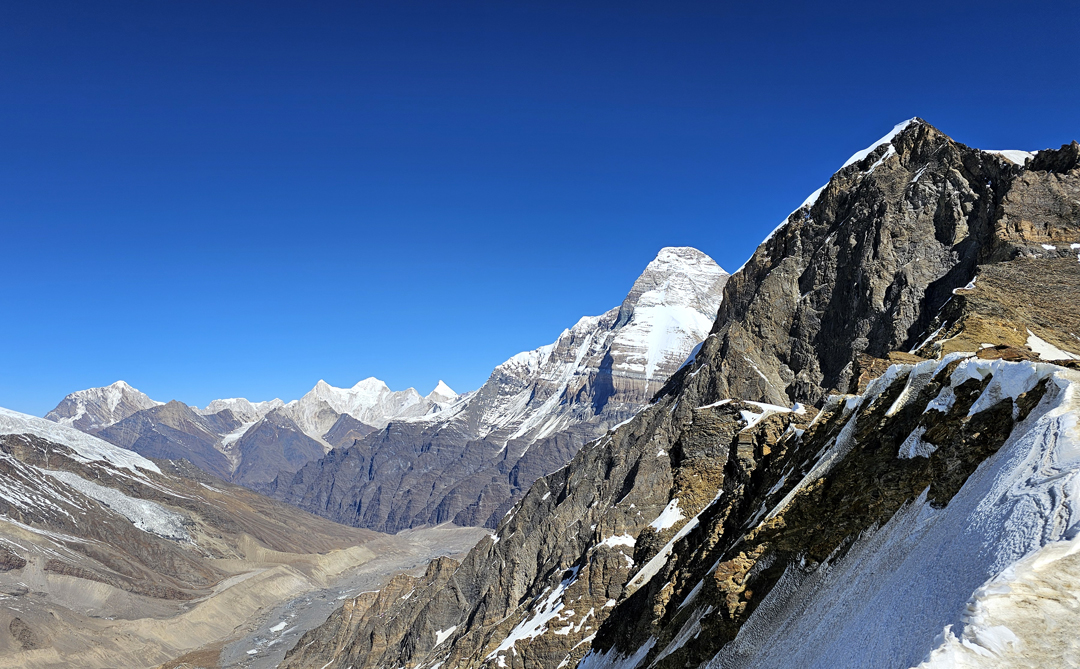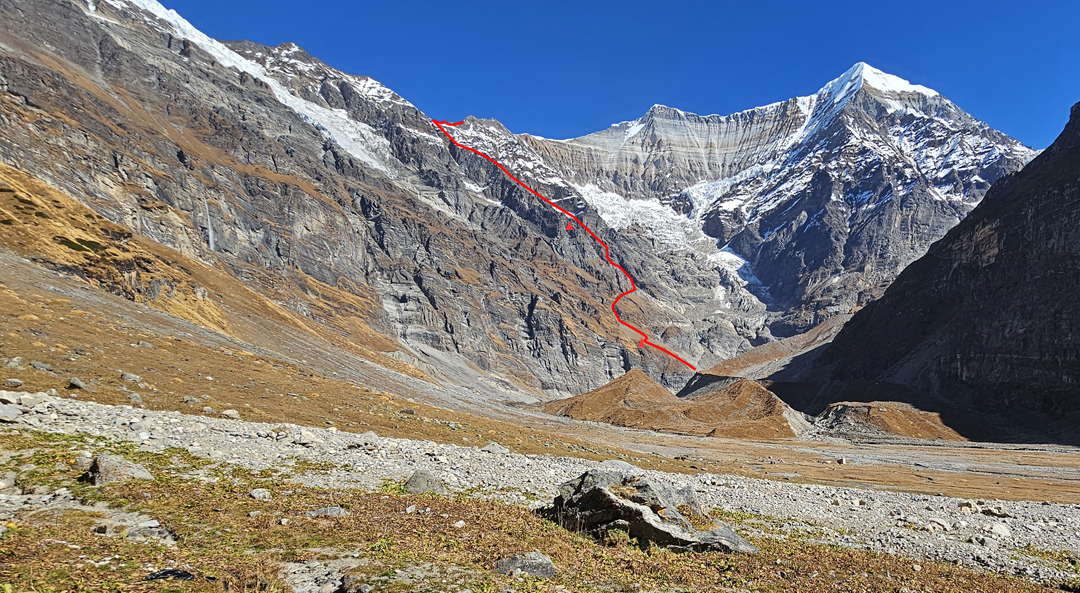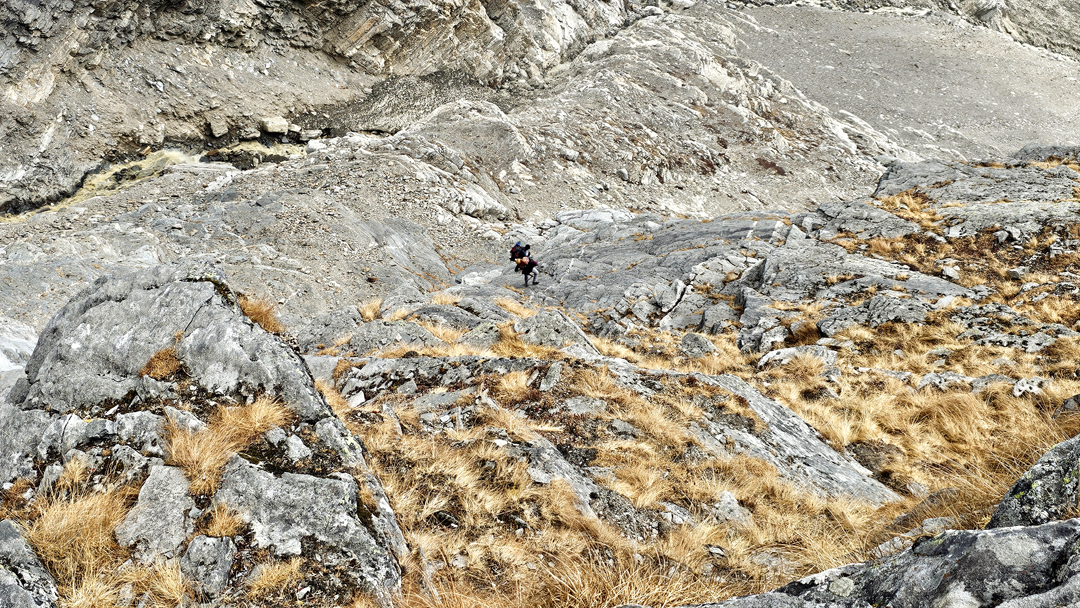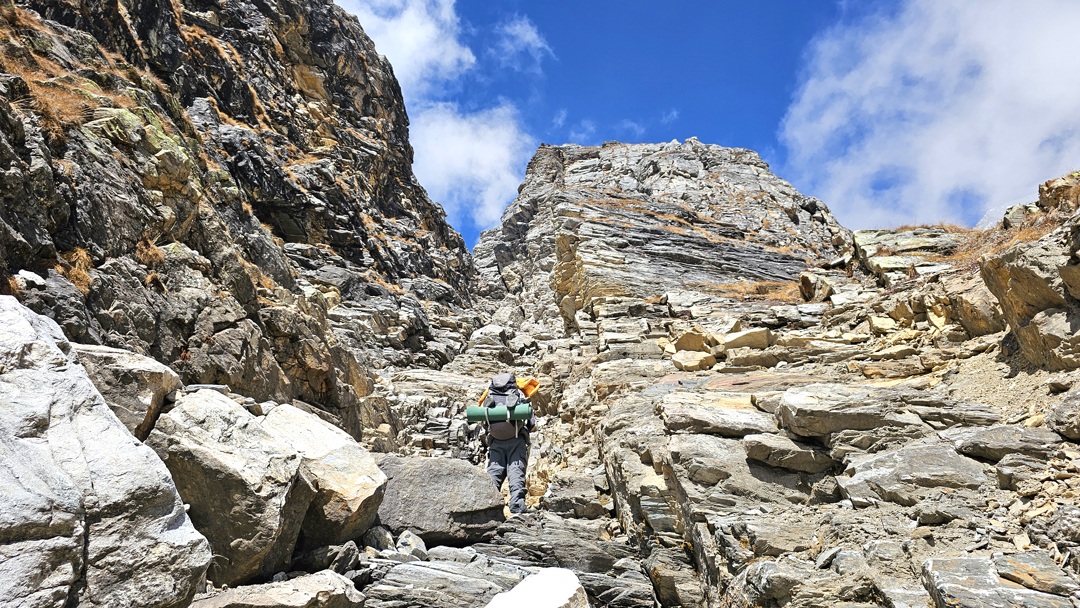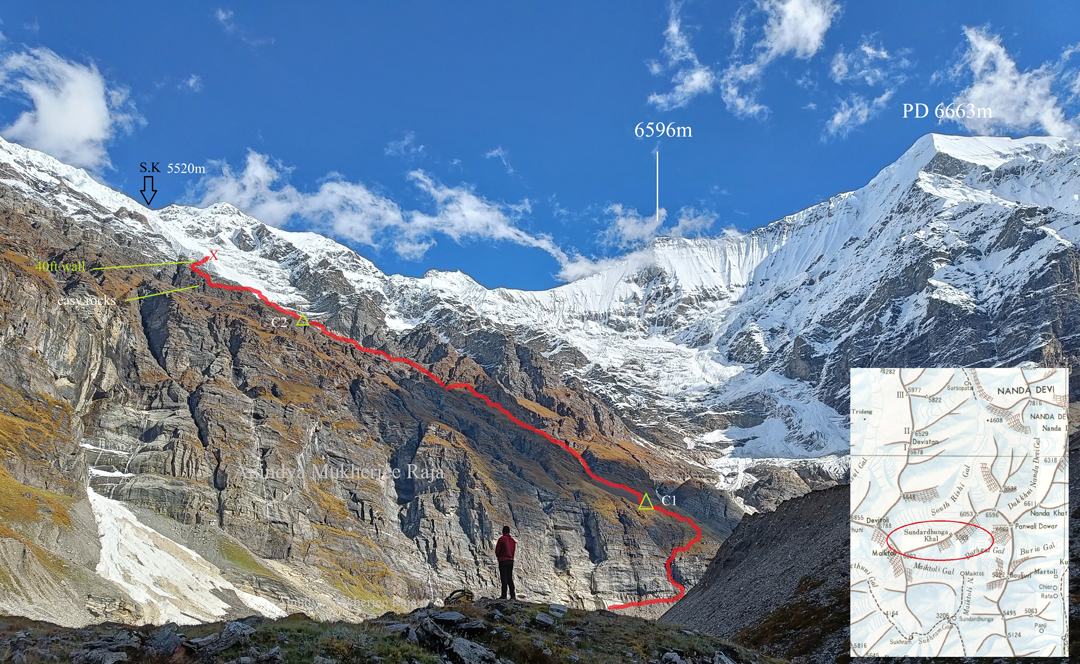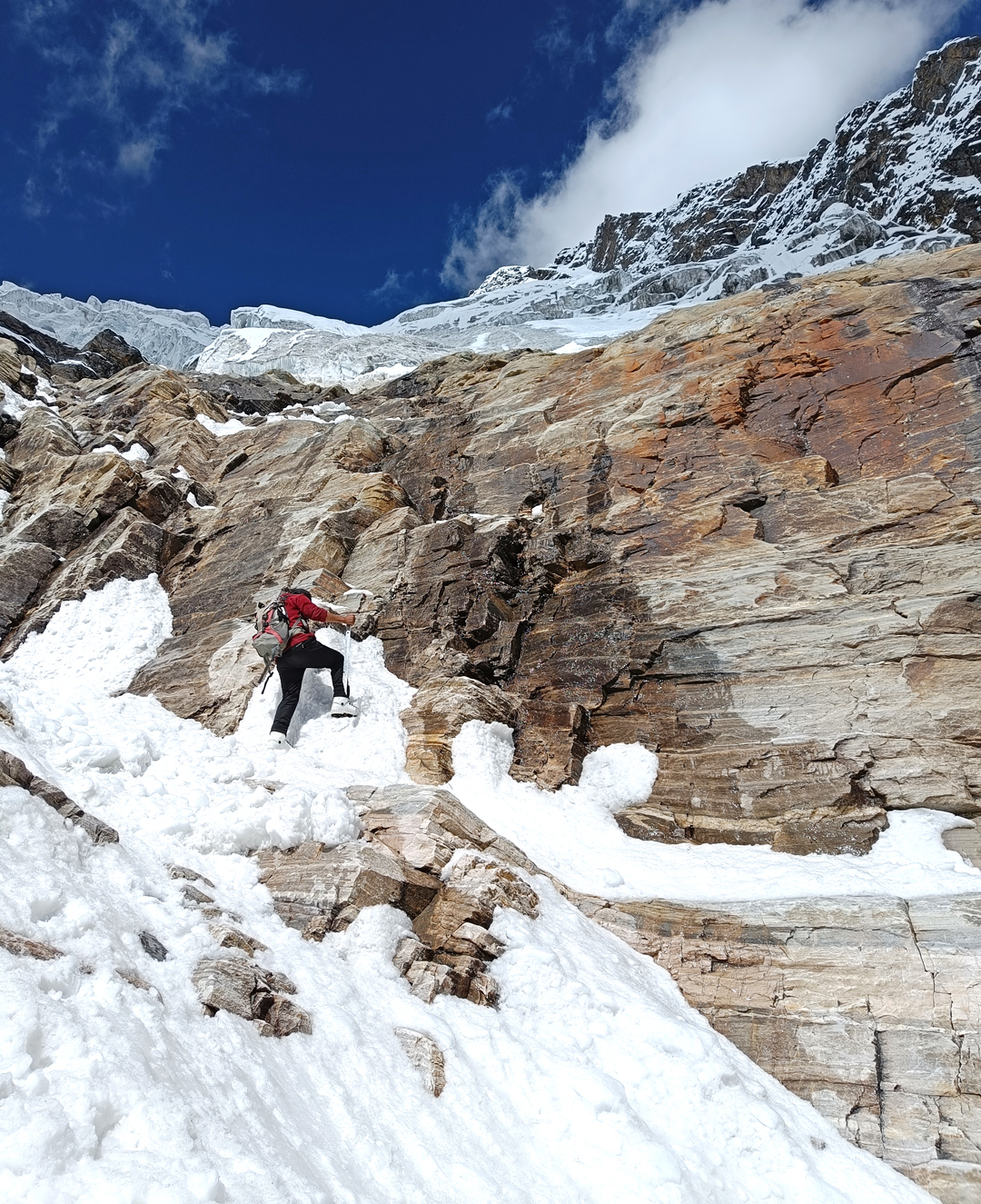Sundardhunga Khal: A Famous Pass Reached from the South
India, Uttarakhand, Eastern Garhwal
A collapsed serac in the icefall was the crux of the 2022 attempt to reach Sundardhunga Khal. Photo: Anindya MukherjeeAccess to Nanda Devi’s Inner Sanctuary has captivated mountaineers for more than a century. On the southern rim, Sundardhunga Khal (Sundardhunga Col, 5,520m, 30°17’10.7”N, 79°54’45.8”E) is the lowest point between Maiktoli (6,803m) and Panwali Dwar (6,663m), with the South (Dakshini) Rishi Glacier to the north and Sundardhunga (Maiktoli) Valley to the south. In 1932, the British Everester Hugh Ruttledge and Emile Rey, one of the foremost Italian guides of the time, inspected the south side of the col but were appalled by the formidable rock and ice wall of nearly 1,800m and retreated.
In September 1934, soon after their historic forcing of the Rishi Gorge to reach the Inner Sanctuary for the first time, Eric Shipton, Bill Tilman, Kusang Sherpa, Pasang Sherpa, and Ang Tharkay climbed glaciated slopes to Sundardhunga Khal and over two days descended the icefall and difficult ground on the south side to make the only crossing of the col to date. The problem of an ascent from the south remained.
In the 1980s, at least two attempts were made by mountaineers from West Bengal, then in June 2015 it was attempted again by Anindya Mukherjee, George Rodway, and Phurtenji (Lakpa) Sherpa. The Shipton-Tilman descent route looked unreasonable due to hanging seracs, so they tried a safer line farther to the right, then retreated at around 4,600m due to bad snow conditions. They planned to come back another year in October-November, when conditions would be better and the weather more stable.
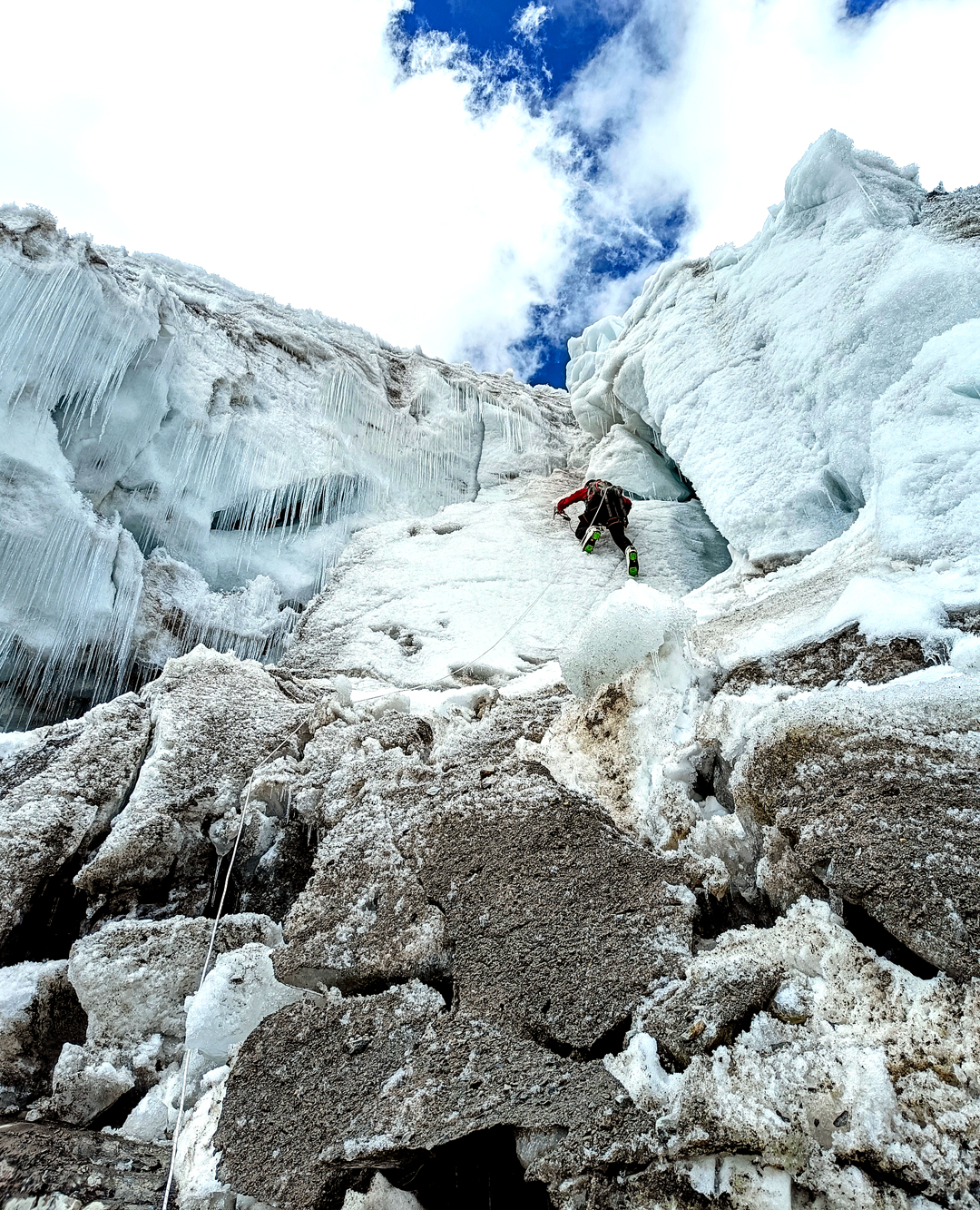
The opportunity did not arise until 2022, when, toward the end of September, Lakpa and Mukherjee returned. By October 3, they had made Camp 1 on the face at 4,160m and identified a spot for Camp 2 at 4,580m.
Leaving early from Camp 1 on the 4th, they passed the Camp 2 site, below the first icefall, after two hours. Above, they crossed an avalanche-swept gully and mixed ground interspersed with rock bands sporting big, chunky holds. They reached a little rock ramp at 5,000m, and the way ahead looked more straightforward; they estimated another 1.5 hours to the col. However, they felt it safer to descend to Camp 2 and come back the following day to finish the job. Unfortunately, during that night and the next day, serac fall bombarded their climbing line. They decided not to push their luck and headed down.
On October 27, 2024, another Indian party, Abhishek Das and Thendup Sherpa, reached Maiktoli Base Camp at 3,908m, then made extensive reconnaissance and chose a line to the right of the 2022 attempt.
They navigated steep slopes of treacherous grass to place Camp 1 at 4,231m and stayed there the nights of the 29th and 30th while scouting the route ahead on more steep grass and loose rock. On the 30th, they placed Camp 2 at 4,917m and occupied it briefly the next day before setting out for the top at 2 a.m. on November 1. Climbing rock and crisp snow, they reached a ridge to the left (west) of the saddle at 11 a.m. and descended this to a col at 11:30 a.m. Glaciated slopes descended north from here into the Sanctuary. Their GPS showed an altitude of 5,653m. A direct ascent to this col would have been extremely dangerous due to rockfall and avalanche exposure.
About 200m to the west, Abhishek Das saw another col, which, based on his observations and Tilman’s descriptions, he believes is the point where Shipton and Tilman’s team crossed to the south. [If one defines the likely 1934 crossing point as the true Sundardhunga Khal, then it would be the more westerly and lower depression. It is not possible to say with certainty, but it appears the 2022 attempt on the south wall was likely near the Shipton-Tilman descent route, while the 2024 ascent was farther to the right (east).] As the two were running low on food at the high camps, they elected to descend directly to base camp, arriving at 11 p.m. the same day. An intense 21-hour effort had closed a long chapter in the storied history of this mysterious region.
—Anindya Mukherjee and Abhishek Das, India


